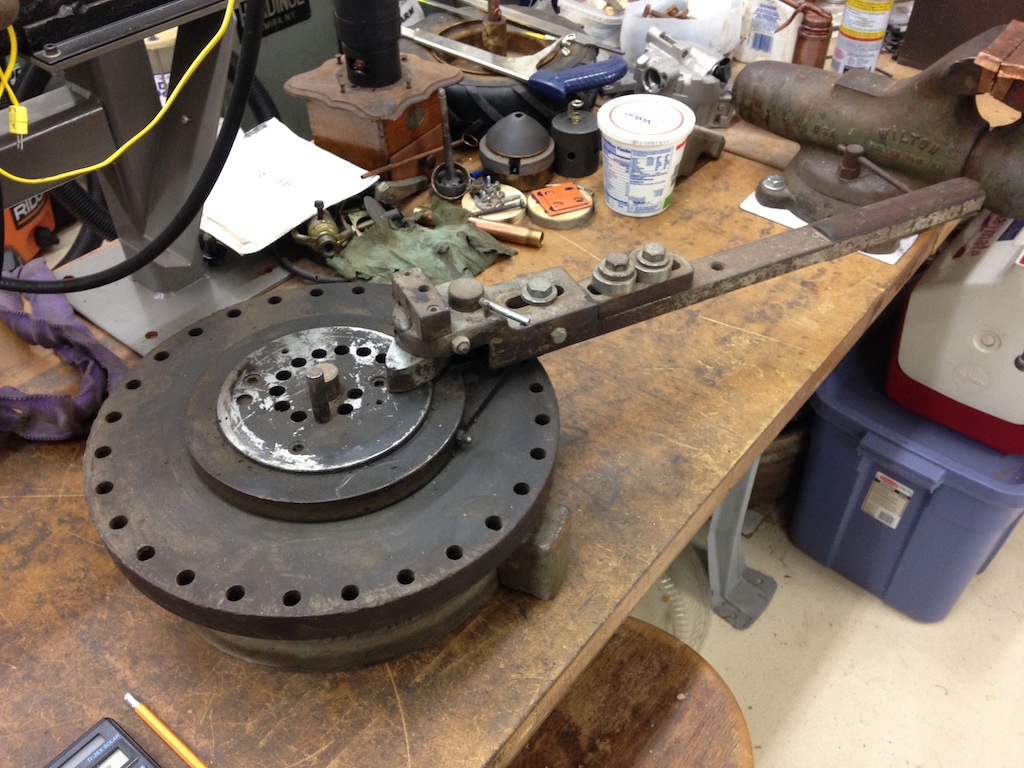Although I have a fairly well tooled Hossfeld #2 bender, there have been occasions where I’ve thought that the Di-Acro style of bender might be advantageous, so I began to keep an eye on Craigslist. As luck would have it, in a couple of days a Di-Acro #2 showed up, so I called the seller, went to see it and hauled it home. The bender had clearly seen some hard use (the nose holder had been broken and welded, the arm had a fair bit of vertical play, and it felt a bit gritty as I rotated it), but at $125 I figured it would be worth the effort to refurbish and become a worthwhile companion to the Hossfeld.
The seller told me that it came from a company that made milking machines and that it was used to bend stainless. He also mentioned that the operators were paid by the part so they didn’t much care if the bender was complaining. I could see that it didn’t get much TLC, but the consequences of its long, hard life became much more apparent as I began to disassemble and inspect it. There were no shims underneath the mounting plate so it had seen some maintenance, but there were also some needle rollers missing. The arm’s ring and needle rollers had worn a track into the top of the main casting. Due to the missing needle rollers some had tipped sideways and badly gouged the inside of the ring (which was also badly galled). The top of the ring had a groove worn into it from the mounting plate. The lip of the mounting plate had corresponding wear from the ring. While some might just use it as-is or even scrap it, for my purposes it is worth repairing. Parts are available from Di-Acro, but they are expensive relative to the bender’s condition and my budget, so aside from a new set of shims and needle rollers, I will make the necessary parts.
The first task was to address the underside of the lip of the mounting plate. I would guess it was originally about .250 thick but once I’d cleaned it up on the lathe it was down to .207. The next step will be to clean up the top of the main casting. I’ve not yet decided how I’ll do this: possibly put it on the rotary table and mill the worn area or perhaps use the shaper to do the whole top. Once this has been taken care of I’ll make a new ring and weld it to the original arm. With that done, new shims and needle rollers should return it to a pretty decent condition, so the final step will be to make a new nose holder. Final? No, of course not! Dies, misc. bits and maybe a quick-lock type attachment…













